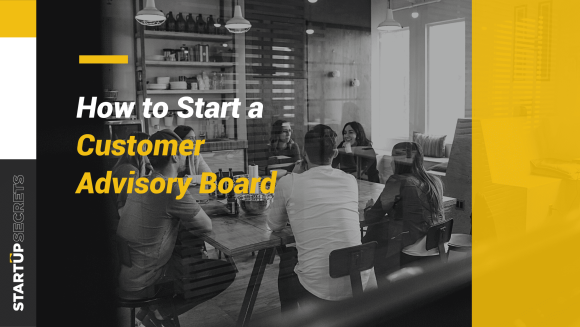Your customer is your #1 stakeholder, and their success is your success. This commitment to their success must permeate every aspect of your business. Otherwise, you’ll run into trouble.
Consider the story of eCommerce platform Demandware. The company thought they were doing things right; they had a great product, strong leaders, and highly effective teams laser-focused on hitting their targets.
But over time, silos built up around the company’s operational departments, and friction developed between teams. If a customer needed a Demandware engineer to help with a technical problem, Services would say, no, this free work isn’t billable, and we won’t hit our metrics. Or if Sales wanted to map out a product roadmap to show alignment with a new customer’s industry, Product would say, no, we have too many backlogged features to roll out, and we won’t meet our goals.
Leadership had to intervene constantly. Tension built within the company, and frustrated customers started calling.
The team had been heads down delivering their business plan, focused on metrics like revenue, gross margin, and cash flow. But by operating on business metrics alone, they were going off the rails, pissing off customers, and damaging the business.
Watch a recording of the original presentation by Jeff Barnett, former COO of Demandware and CEO of Salesforce Commerce Cloud.
The Business Case for Customer Success
It’s common knowledge that technology has transformed every aspect of our lives—from how we shop, to how we travel, to how we communicate. Customer relationships are no longer transactional—they’re continuous and connected as we deliver services to and interact with our customers daily.
It’s always been true that your product doesn’t matter if no one will buy it. But these days, your product doesn’t matter if no one continues to buy it. You have to sell a whole experience, not just a tool. Furthermore, switching costs are going down every day, putting power in the customer’s hand.
What is Customer Success?
In its simplest definition, Customer Success is delighting the customer by enabling them to fully realize their objectives—and delivering an exceptional experience in the process.
Customer Success is not a function; it’s a mindset. It all starts by aligning your company around the customer’s path to success.
How to Build a Customer-Centric Business
Remember: The power is in the customer’s hands. It’s their game. You need to learn their rules and understand how they define winning. Then, build your business around their success.
Do this by breaking it down into four key steps:
- Design: Chart the path for the customer to achieve their objectives.
- Operationalize: Build a customer-centric operational model.
- Represent: Establish a Customer Success team as an internal advocate.
- Monetize: Align your business model to the customer’s success metrics.
1. Design: Chart the Customer’s Journey
Take a step back and put yourself in their shoes. Map out the customer journey, learn their success metrics, and understand how you’re going to facilitate that journey.

To chart a path to reach the customer’s objectives, reflect on three key questions:
- What are the customer’s objectives? Think about their reasons for purchasing your product. This could include revenue growth, cost savings, margin improvement, cash management, or something else?
- What are the metrics they will use to measure these objectives? Hone in on two or three key metrics that allow you to truly measure what’s important to the customer.
- What work needs to be completed for the customer to realize their goals? Don’t just think about your own product — think across the supply chain. Consider all the different people, processes, and tools involved in achieving their goal.
You can also think about measuring these goals through Customer Performance Indicators (CPIs). According to an April 2020 Harvard Business Review article, a CPI “must be an outcome customers say is important to them,” and it “must be measurable in increments that customers actually value.”
2. Operationalize: Build a Customer-Centric Operating Model
Traditionally, companies have used a department structure that includes Marketing, Sales, Delivery, Support, and R&D. But where is the customer’s voice in this structure?
To take a customer-centric approach, start with the customer’s journey and structure your business priorities around it.
Organize the journey into four broad phases: Select, Activate, Scale, Innovate (SASI). Each phase maps your own priorities to a stage in the customer’s journey.

- Select: Show the customer that your product is the best solution to their problem.
- Activate: Successfully onboard the customer, which includes implementation and training.
- Scale: Roll out your value proposition across the customer’s entire business.
- Innovate: Continue to find new ways to add value. Your customer isn’t done once they hit their goal. Just like you, they’re under continuous pressure to grow their business.
Every single employee’s work will influence this journey. It’s a fully cross-functional effort that focuses on what matters most to the customer.
To track progress on improving outcomes for the customer each step of the way, identify relevant metrics and create an operational dashboard that aligns to the four phases.

Hold yourself accountable for this progress. At company meetings, talk about how the company is doing at each phase and assign department actions based on this progress.
3. Represent: Establish a Designated Customer Success Team
As a reminder: Customer Success is not just a department; it’s the essence of your whole business. However, it’s still important to assign a group to be the “advocate” of the customer. For this, you’ll need to build a Customer Success team.
In the early stages of a company, this could be one or two people. As your company grows, the team will grow with it.
Tip: Consider hiring a customer to lead this team. If you bring in someone with first-hand experience in your customer’s world, you can tap into that perspective every day.
This team should:
- Report to the CEO for a direct line of communication on behalf of the customer.
- Own Customer Success strategy and programs, advocating for the customer’s needs.
- Serve as the customer’s primary point of contact.
- Be fully aligned to the success of the customer, including compensation; if customers aren’t reaching their goals, this team isn’t either.
Day to day, this team might:
- Live with the customer to get to know their business. That means physically sitting in the customer’s office to observe and learn.
- Develop and propagate best practices to help customers reach their goals.
- Identify friction points in the customer experience by determining what works or what’s missing.
- Coordinate Voice of the Customer (VoC) activities such as a customer council or forum.
Loop this feedback across your company and leverage these insights to adjust resource allocation, update your product roadmap, and determine next steps.
4. Align Your Business Model to Customer Success
In a typical software company, the interests of the customer and those of the company diverge post-sale. Even if a software company deeply cares about its customers, at the same time, it’s under tremendous pressure each quarter to deliver growth. Any program that adds value to existing customers is seen as an expense. So despite the best intentions, it’s hard for companies to continue to do what’s right for the customer.
How do you avoid that? Choose a business model that captures value in concert with the customer. Some great examples include:
- Utilization: Airbnb, Lyft
- Revenue/Gross Merchandise Volume: Demandware, Amazon
- Cost Per Click: Google Ads
- Subscription Seats: Salesforce, Zendesk
You can and should measure internal business metrics, but this should be done within the context of a plan that maximizes the customer’s outcome.
This framework provides one way to think about Customer Success, but it’s not the only way. As long as your entire company is mobilized around improving every aspect of the customer’s journey, you’re on the right path.








